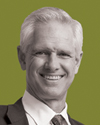
Anyone who questions the value of art should take a look at the Charles Pankow Foundation. Under the stewardship of Richard M. Kunnath, the nation's only privately funded group devoted to building innovation has sponsored $8 million worth of applied research since 2006. Funds come from a $44-million endowment generated mostly from the sale of the art collection that belonged to the late construction giant Charles J. Pankow.
 |
| KUNNATH |
"Innovation was what Charles Pankow was always about," says Kunnath of his late mentor-partner. Kunnath, the foundation's president from its inception, also is executive chairman of Pankow Management Inc. A professional engineer, Kunnath joined his mentor in 1979.
Pankow formed the foundation, based on a suggestion from Kunnath, soon before he died at age 80 in 2004. He never saw it bloom, but he left it in good hands.
At the time of Pankow's death, the nascent foundation had no structure. Kunnath, surprised by the art-collection endowment, organized the foundation. His goal was both to honor Pankow and to do good for the industry.
Kunnath is "a leader of leaders," says Glenn R. Bell, a member of the foundation's advisory board and CEO of structural engineer Simpson Gumpertz & Heger. Ron Klemencic, a director of the foundation's board and president of structural engineer Magnusson Klemencic Associates, says the foundation stands out for funding only research aimed at immediate and measurable improvements.
That a research project was "funded by a grant from the Charles Pankow Foundation" has been written at least 10 times in ENR—twice in 2012. Grants supported the first large-scale load tests of reinforced-concrete link beams with embedded steel sections and tests of a hybrid shear-wall assembly. Grants to date, which also include support of digital tools and standards, are listed at pankow.org.
Kunnath says adoption of the innovations has been slow, due to industry resistance to change. "We really did naively think that if we could solve a problem, people would adopt the solution," he says. "We are going to be more cautious about what we fund [until] we understand what it would take to get it implemented."


Post a comment to this article
Report Abusive Comment